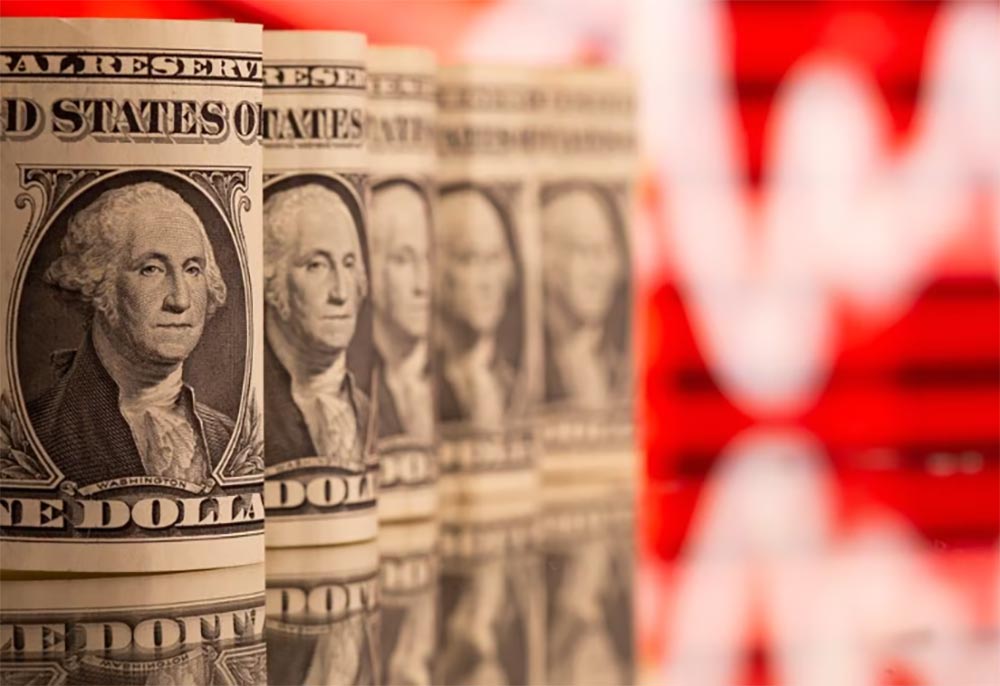NEW YORK- Federal Reserve officials believe their effort to shrink the US central bank’s bond holdings is far from done, pushing back against some economists’ idea that dwindling financial sector liquidity would bring the drawdown to a close in coming months.
Instead, Fed officials reckon there remains a lot of liquidity, properly measured, for them to remove as part of their push to tighten financial conditions and bring down inflation.
These officials also noted the Fed at some point could even lower short-term interest rates as it continues to draw down the roughly $8.5 trillion balance sheet, and that such a move would not be at odds with wider monetary policy.
“I am confident that we have room to continue running off our assets for quite some time,” Dallas Fed President Lorie Logan said in a speech earlier this month. “Exactly how long that is will depend on a careful assessment of the financial environment.”
Logan’s view is significant because she helped design and implement monetary policy as a top open markets official at the New York Fed before moving to the Dallas Fed last summer.
The Fed more than doubled the size of its balance sheet between March 2020 and last summer through aggressive purchases of Treasury and mortgage-backed debt that led the central bank’s holdings to top out at a record of around $9 trillion. The purchases helped stabilize financial markets and provided economic stimulus beyond the near-zero interest rate policy put in place as the coronavirus pandemic struck.
Last year, faced with a massive and persistent surge in inflation, the Fed jammed the policy gears into reverse. In March, it embarked on an aggressive campaign of rate rises aimed at lowering inflation back to the Fed’s 2 percent target. In June, it also begun to allow a rising number of the bonds it owned to mature and not be replaced.
It now aims to unload just shy of $100 billion per month, and so far that approach has taken nearly $420 billion of bonds off the Fed’s balance sheet.
The challenge now for the Fed is how far to go. Taking out too much liquidity could threaten control over short-term rates and spark a replay of the September 2019 market tumult that marked the end of its first balance-sheet shrinkage effort, also known as quantitative tightening. Then, the Fed was forced to intervene in markets and reverse course to rebuild bank reserves through renewed net bond purchases.
Fed officials and outside observers don’t expect that to happen again. For one thing, Fed Chair Jerome Powell has already said he doesn’t want to test how far the central bank can shrink reserves. Meanwhile, the Fed has a new and as-yet untested facility called the Standing Repo Facility that can provide fast liquidity if financial firms need it.
Logan, for one, said some turbulence in the drawdown would not be enough by itself to stop the process. And as it now stands, Fed officials see plenty of liquidity for them to eliminate.
Since the Fed began raising rates in March 2022, reserves have fallen from $3.9 trillion to $3 trillion now. This contraction, coupled with regulatory issues and other considerations, had driven some analysts to speculate that a reserves shortage loomed.
Some are still on this page. Boris Senderovich, a fixed income analyst at Scotiabank, said in a note last week that reserves now stand at about 13.3 percent of US gross domestic product. Right around 11 percent is the point at which they could start running short, and at the current pace of reserve contraction, he said, “we could get there in short order,” perhaps as soon as June.
Fed officials increasingly view liquidity as more than just bank reserves, a view that may extend the horizon for balance sheet cuts.




